Board Approves Concrete Fish Houses In Hanauma Bay, Waikiki Sand Channel
On September 25, the state Board of Land and Natural Resources approved a one-year special use permit to Mark Hixon, a professor of marine biology at the University of Hawai`i, for the deployment and study of artificial reef modules in the Hanauma Bay Marine Life Conservation District and Waikiki. If the modules successfully recreate coral reef habitats, Hixon told the board, they could prove to be valuable tools in mitigating the impacts of climate change and intensive fishing.
Artificial reefs are nothing new and, in fact, the state has constructed a number of them. But according to Jack Randall, senior ichthyologist at the Bishop Museum, those reefs “have not provided the appropriately sized shelter for fishes.”
Hixon’s work could remedy that.
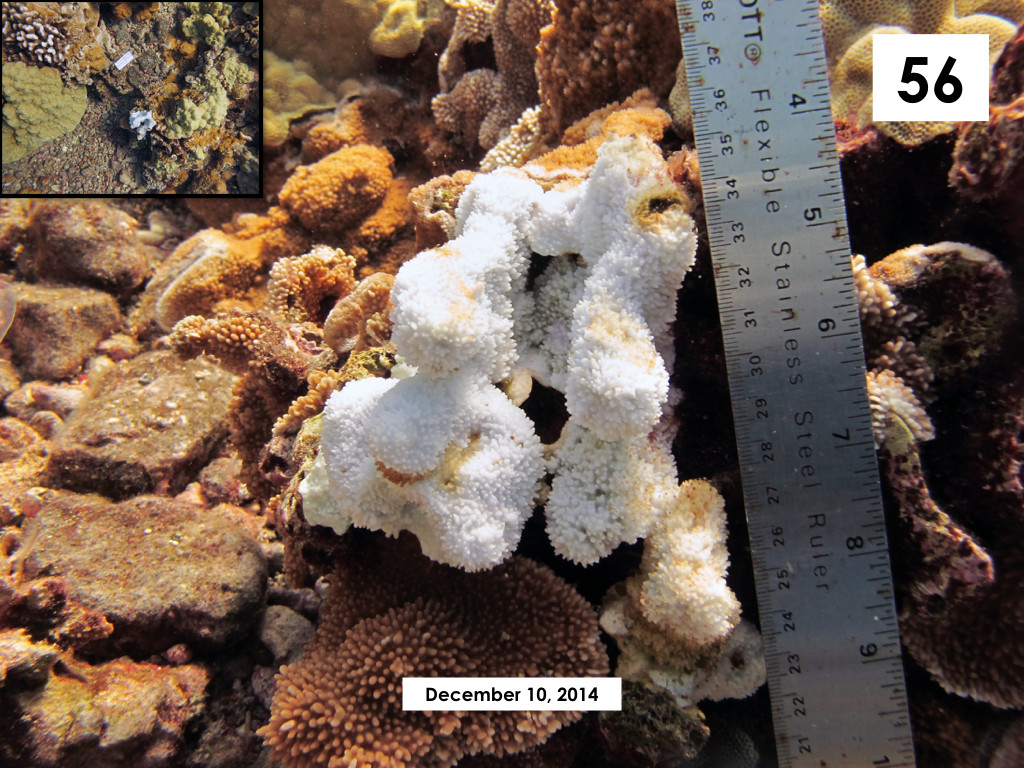
A year ago, Hawai`i suffered the greatest coral bleaching event in its history, he told the Land Board.
“We were lucky that time. Most of those corals recovered. … We’re now on a coral bleaching watch well into the fall. We’ve been lucky so far, but the projections are that the intensity and frequency of events will be increasing. Our luck will not last forever,” he said.
Indeed, shortly after his presentation to the Land Board, the state experienced another unprecedented bleaching event. By early October, the Department of Land and Natural Resources’ Eyes of the Reef Network had more than 100 bleaching reports in a matter of days.
Bleached corals can recover if larvae are able to settle. Otherwise, they are overcome by seaweed. Hixon said he’s seen reefs die from coral bleaching, taking with them the biodiversity and ecosystem services the reefs support.
A key factor in reef recovery is the presence of herbivores, such as parrotfish and sea urchins. If they’re present in reasonable numbers, dead corals are kept clean and larvae can settle and grow. But the problem on O`ahu, he said, is that intensive fishing has severely reduced the abundance of herbivorous fishes, especially parrotfish, otherise known as uhu.
According to a reef assessment by the National Oceanic and Atmospheric Administration, O`ahu has by far the lowest abundance of reef fish of any of the Hawaiian islands.
On the deep sand flats of Hanauma Bay, Hixon plans to build six fish houses to locally enhance herbivores and help corals persist as they suffer the effects of bleaching. Each house, or “artificial coral module,” would consist of 48 concrete blocks. He plans to install the same number of modules in the Apuakehau or Halekulani sand channels in Waikiki.
Because fishing is prohibited in Hanauma Bay, the modules there will serve as a control site to determine the effects of fishing. Some of the blocks will have holes in them, some will not. Those without holes are meant to simulate dead reefs that have lost their structural integrity.
“The proposed deployment location in Hanauma Bay is well beyond the sight of the vast majority of the visitors to the MLCD and will therefore have little impact on the visitor experience. In addition, this research can be used as a valuable opportunity to educate the public and visitors on the benefits of healthy reefs and how we can manage for resilience,” UH scientist Alan Friedlander wrote in an April 14 letter of support to the DLNR’s Division of Aquatic Resources (DAR).
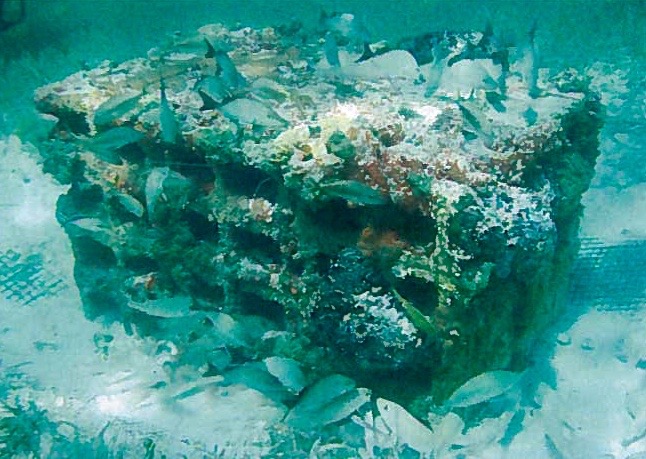
Hixon said he will monitor the modules to determine whether the fish that aggregate around them are local or are transplants from other areas. Hixon has already built 52 such structures in the U.S. Virgin Islands and has done similar work in the Bahamas. In both cases, he said, the modules attracted fish and spurred coral colonization.
“They eventually grow into natural structures. When organisms settle and grow, you get coral growth where there wasn’t before,” he said.
The modules to be placed around O`ahu could become natural features, but they can also be removed, Hixon said.
At DAR’s request, the university’s Office of Research Services has entered into a Memorandum of Agreement to ensure that Hixon remains responsible for the maintenance or removal of the modules. Should the modules be removed, he would also be responsible for the cost of returning the sand flat to its original condition.
Land Board member Keoni Downing expressed some concern about the stability of the modules during a hurricane. Hixon replied that the modules in the Bahamas have been hit by a number of hurricanes and are still standing.
He added that the modules are the first step in a two-pronged approach to restore reef ecosystems. Researchers are also working to identify corals that are resistant to bleaching and transplant them.
“If all there is out there is seaweed, they’re not going to grow. We have to have an acceptable environment. The danger we face on O`ahu is a phase shift,” he said, referring to what happens when a reef ecosystem becomes dominated by algae. And because O`ahu has such low fish abundance, that’s a real danger.
Unless bleached corals are kept free of seaweed so they can be recolonized, worms and other boring organisms break the corals down.
“I can’t tell you how ugly it is to see that,” he said.
***
Board Approves Rules To Manage
Surf Schools at Kahalu`u Bay
After about a decade of effort by the community, new rules aimed at taming the unruly and unsafe surfing and swimming conditions at Kahalu`u Bay in West Hawai`i were approved by the Land Board on October 9.
The rules establish a zone in the bay within which commercial surf schools may operate and limits the number of schools to four. Each school, which must obtain a permit from the DLNR’s Division of Boating and Ocean Recreation, may have no more than eight students in the water, with no more than four students per instructor.
DOBOR had first asked the Land Board to approve the rules in August, but members Keoni Downing and Stanley Roehrig, both experienced surfers, balked at endorsing rules that they thought were unsafe. Both expressed their concern that four students to one instructor was inadequate. Downing, who teaches surfing, said at times, depending on the age of the client, he has two instructors for one student.
Because no members of the Kahalu`u community were in attendance at the Land Board meeting that day to explain how they came up with the 4-1 ratio, the matter was deferred.
When DOBOR brought the matter back to the board last month, Kenneth Van Bergen of the Hawai`i County Department of Parks and Recreation and Cindy Punihaole of The Kohala Center testified in support of the rules as proposed.
Because Hawai`i Island is such a young island, there are few accessible beaches, so surf schools congregate there, creating a lot of congestion, Van Bergen said.
“I’ve seen 60 students in the water [at Kahalu`u Bay], not including locals,” he said, adding that the schools are “congregating on the street with their vans and trucks with 15 boards.”
Downing suggested that the county could have stepped up its efforts years ago to enforce or adopt its own rules restricting parking or using county property.
“It’s something that the county could have helped solve from the road to the shore. … You’re wanting us to work on something from the ocean. They still gotta get from the road to the beach to the ocean,” he said.
Van Bergen, who only recently joined the Parks Department, told Downing he had a valid point and said he didn’t know why the county hadn’t addressed it earlier.
Punihaole assured the Land Board that the county would be working on managing the problems at Kahalu`u, but the community still needed the board to help “build a safety issue into the equation.”
“The zones and surf school [limits] is what we need from you,” she said.
A DOBOR staffer added that the county will be taking responsibility for the concessions, while a non-profit group will ensure compliance on the beach.
Land Board member Chris Yuen added that once the rules cap commercial surf schools at four, the county can impose stricter limits.
Roehrig urged the county to pursue a plan to reduce the student-teacher ratio when the surf gets big.
“If someone gets hurt, the first people going to get sued is the state. The county is going to get sued because they had inadequate lifeguards,” he said. “We had a quadriplegic in Ka`anapali [as a result of a surf school accident]. There’s a big lawsuit going on right now in federal court in Honolulu. This is not a small matter. … That’s why we’re a little bit hilahila (shy) about the way it is, at least me and Keoni.”
Even so, he and the rest of the Land Board unanimously approved the rules, which also establish a swimming zone where all vessels, including surfboards, are prohibited.
***
Dillingham Ranch Gets
Access, Utility Easements
As far as Land Board member Chris Yuen was concerned, the September 25 request by Dillingham Ranch Aina, LLC, for perpetual access and utility easements in favor of its land-locked mauka property was no different from dozens of similar requests the board had granted over the years. The ranch’s highly publicized and controversial proposal to develop 94 small lots on its makai lands was immaterial.
But representatives from the Sierra Club, Hawai`i Chapter disagreed and urged the board to deny the easements, which would connect the ranch’s upper 500 acres to its 434 acres of makai lands. They argued that the easements would facilitate the development and would thereby contribute to the cumulative impacts on the property and surrounding areas. As a result, they argued, the Land Board could not exempt the easements from undergoing an environmental review. Should the board approve the easements, the Sierra Club said it would want a contested case hearing.
Although the ranch said it planned only to graze cattle on the mauka lands and not develop them, the Sierra Club argued that those cattle might be used by the ranch to create the semblance of agricultural use to justify the “fake farm” development. Indeed, the ranch’s Clifford Smith told the Land Board that the state Department of Agriculture was requiring the ranch to not only maintain its cattle herd of 120 animals, but increase it to 220.
But Smith also noted that the ranch’s subdivision application with the city had expired. So as of the date of the Land Board meeting, there was no pending development.
Yuen later noted that if the ranch does eventually decide to proceed with the subdivision, the City and County of Honolulu is the primary authority.
“The planning director will make the decision as to whether they need an EA [environmental assessment] or EIS [environmental impact statement],” Yuen said.
According to statements Smith had made, “it sounds like they will have to do an EIS. They will have to do one or the other,” Yuen continued. “Dissatisfied people can file suit. … Right now, they don’t have a subdivision application.”
“I think that’s very convenient. [What about] ten minutes from now?” asked Hawai`i island Land Board member Stanley Roehrig, who seemed to share the Sierra Club’s concerns.
Yuen countered that if the ranch never proceeds with a subdivision, “how many years do they have to wait before they get the easement?”
The Land Board had actually approved an easement in 2008, but it was never executed. And since then, the ranch has decided it would like to move the easement and add one for utilities to bring water to the mauka lands.
Roehrig asked Smith whether the easement would have a nexus with the proposed development.
“It could. It would be a subdivision road [but] it’s not going to have a road that has 5-acre lots on it,” he said. He added that the mauka acres are too steep to build houses on and that the ranch planned to split it into no more than two parcels of 250 acres each.
Despite the Sierra Club’s concerns, Yuen said he just didn’t see a connection between the 500 acres being subdivided into two lots “and whatever happens on the 90-lot subdivision below. I don’t get it. What’s the problem? … I suspect had there not been this 90-lot subdivision proposed, this would have been an item that just breezed by.”
“I don’t even see a change in use,” Land Board chair Suzanne Case added.
In the end, the Land Board approved a motion by Yuen to grant the easements on the condition that they serve no more than two lots. Board members Roehrig and Keoni Downing opposed Yuen’s motion.
***
Turtle Bay Deal Wins
Land Board Approval
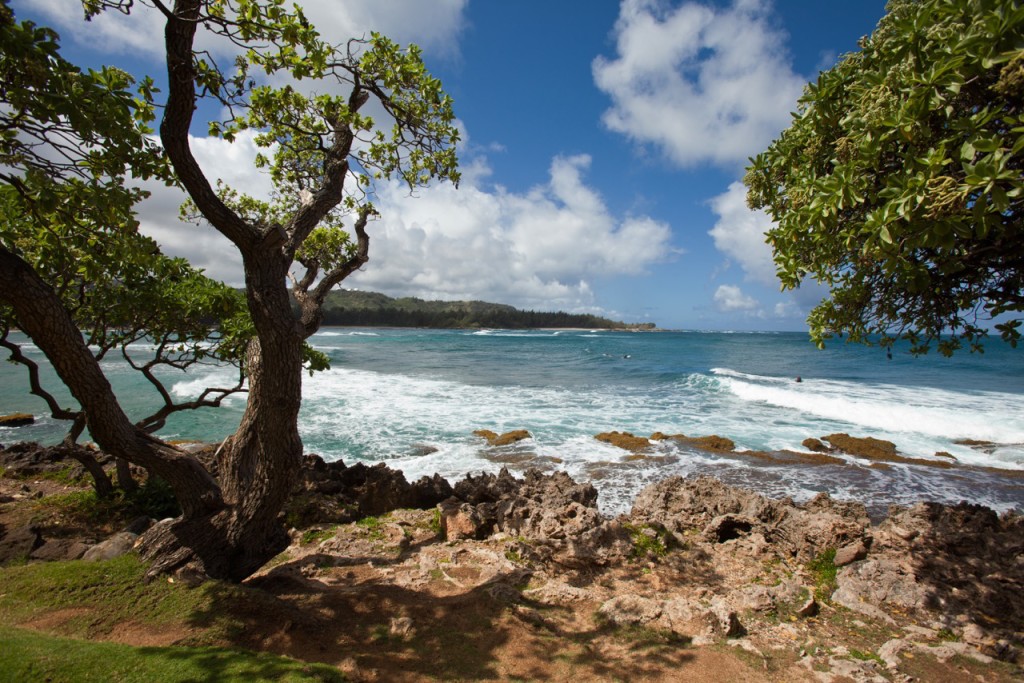 On October 23, the state formally acquired a perpetual conservation easement over 560 acres at Turtle Bay Resort and the fee simple interest in 52 acres at Kawela Bay, forever protecting the lands on O`ahu’s North Shore from large-scale development.
On October 23, the state formally acquired a perpetual conservation easement over 560 acres at Turtle Bay Resort and the fee simple interest in 52 acres at Kawela Bay, forever protecting the lands on O`ahu’s North Shore from large-scale development.
About a month earlier, the Land Board approved the $37.5 million deal that was approved by the state Legislature and Gov. David Ige this past session. The board’s vote was unanimous, but some members lamented that under the terms of the deal, in which the state will immediately lease the Kawela lands back to Turtle Bay for the next 65 years, the resort may continue using the 52-acre parcel for weddings, surfing lessons, tours, and the like, while dictating where and when members of the public may traverse it. Given that the bulk of the state’s $35 million contribution toward the purchase is for the Kawela lands, the board questioned whether legislators knew what they were voting for when they passed the bill laying out the terms of the purchase.
Doug Cole, director for the North Shore Community Land Trust, contended that the Legislature knew exactly what it was doing. In agreeing to sell the fee to the state, Cole said, Turtle Bay’s condition was that they could continue doing what they were doing.
“Sixty-five years from now, the state will have the option of taking full control of that. … It’s about kids not yet born,” he said.
Turtle Bay Resort CEO Drew Stotesbury explained that the fee simple sale was actually a hard thing for his company to accept.
“It took a lot of hard work to accomplish that. … What we end up with is a very solid compromise. We understood the value to the state to hold the fee, … but we also had this understanding that we wanted to continue our business and honor our existing rights and uses,” he said.
Turtle Bay was also able to negotiate terms in the lease that will allow it — with Land Board approval — to build minor structures and install infrastructure on the state land. In total, the improvements will cover no more than 3,000 square feet and will facilitate the development of the resort’s adjacent land.
In any case, Lea Hong, director of the Trust for Public Land’s Hawaiian Islands program, told the Land Board, “I don’t think in the years to come people will question how much we spent here.”
Protecting such a huge swath of coastal land from development not only benefits natural resources and the community, it also resolves years of litigation and, as state Attorney General Doug Chin put it, “emotional angst” over the resort’s efforts a decade ago to build more condos and five new hotels that together would add 3,500 units to the property.
“A pubic-private partnership is a very difficult phrase to actually put into practice,” he told the Land Board. “This is pretty close. This is about as close as I’ve seen.”
The resort is still on the hook to remediate any contamination found during a second phase of environmental studies of the property. Phase one found there had been a release of chemicals related to the golf courses and a data gap regarding the old Kahuku airfield, which was overrun by a tsunami in the 1940s.
The state is requiring Turtle Bay Resort to hold $500,000 in escrow to cover the cost of any cleanup, which would occur after the sale closed. The resort had initially offered only $250,000.
For Further Reading
Environment Hawai`i has written extensively on Turtle Bay Resort’s proposed expansion over the years. For more background on this issue, see the following stories in our archives at environment-hawaii.org:
- “Spurred by Kuilima, Environmental Council Considers Shelf Live of Disclosure Documents,” and, “Agreements Require Kuilima Developer to Fulfill a Wide Range of Conditions,” June 2006;
- “Commission Delays Forcing Developer to Justify Urban Designation at Kuilima,” March 2009;
- “State Supreme Court Hears Arguments Over Supplemental Review of Kuilima Expansion,” and “Land Use Commission Tries but Fails to Resolve Dispute over Kuilima Resort,” March 2010;
- “Land Use Commission Defers Decision Regarding Turtle Bay Resort Redistricting,” December 2013; and
- “Governor Signs Turtle Bay Bill,” Board Talk, July 2015.
***
Termination of Honey Bee Lease
Is Deferred Yet Again
Will the state Division of Boating and Ocean Recreation (DOBOR) let stand the Land Board’s September 25 decision to terminate Honey Bee USA’s lease for the Ala Wai Small Boat Harbor on November 15, or will it recommend that the board rescind it?
As of press time, it wasn’t clear, but given the time needed for the division to have a recommendation ready for inclusion in the public notice of the Land Board’s November 13 meeting, Honey Bee would have had to secure $35 million from its investment partner in the Waikiki Landing project at the harbor by the end of the October.
DOBOR had recommended twice before that the Land Board terminate Honey Bee’s lease after the company fell behind on its rent and failed to post a performance bond. The last time, in July, Honey Bee promised that it would either secure funding by the end of August or walk away from the lease.
Honey Bee failed to provide funding by its own deadline, but rather than abandoning its lease as promised, company representatives Keith Kiuchi and Deron Akiona appealed to the Land Board on September 25 to extend that deadline to December.
Kiuchi tried to explain that Honey Bee’s partner, ICON, has the money, but it was tied up in a Hong Kong bank.
“They’re at the mercy of the bank in Hong Kong, which is at the mercy of the world market,” Kiuchi said. “It’s not a question of if they’ll fund, it’s a question of when they’ll fund.”
He said the money was expected to be wired to an account with the Bank of America in the first or second week of October.
Akiona reminded the Land Board that the DLNR has already benefitted significantly from its relationship with Honey Bee. The department has received almost $1.2 million in rent and development fees.
“The state would have gotten a little over $600,000 under the pre-existing lease,” Akiona said. He added that Honey Bee has spent $4.7 million just to make the property developable.
“I’m not going to say this as a criticism, but I want to make this clear: when DLNR put the [request for proposals for the Ala Wai development] out, it didn’t even have clean title to the parcel,” he said, noting that the state Department of Transportation (DOT) and the DLNR both claimed title and there were private owners, as well.
“The developer cleaned up this whole mess. … It took a lot of time and capital,” he said, adding that the jurisdiction over the Ala Moana bridge is still in question.
“DOT has still not given it up,” he said.
Akiona argued that if the Land Board canceled Honey Bee’s lease, it would be stuck with an inoperable fuel dock and a parking lot that would likely be invaded by the homeless. What’s more, he continued, any new developer will likely have to wait in line for years to get a permit to connect to the city’s sewer system.
“We want to make this project work. We have 32 leases already signed for this project, 32 people already expecting to move … a lot [of them] relocated from the International Marketplace,” he said.
Akiona’s arguments and promises rang hollow with DLNR staffer Keith Chun who is assisting DOBOR in overseeing Honey Bee’s lease.
“It’s nothing new. This has happened over and over again,” Chun told the board. He noted that Honey Bee had provided the DLNR with an unsigned loan agreement between Honey Bee and ICON shortly before the board’s meeting
“If ICON was committed it would have signed,” he said.
Chun continued that DLNR staff had received at least five different funding proposals from Honey Bee, none of which have come to fruition.
“I used to wake up every morning thinking Santa Claus going come …,” he said of the likelihood that the funding would come through this time.
In addition to the funding issue, Chun voiced his skepticism of whether ICON or Honey Bee had the development expertise to see the project through. When DOBOR initially selected Honey Bee to develop the harbor, it was wholly owned by a Japanese principal who had a track record of developments in Japan, as well as ample financial resources, Chun noted.
“That guy’s come and gone. He’s a one-percent owner now,” he said.
Chun recommended that the Land Board terminate the lease and start over. He said it would take more than a year to prepare a new request for proposals that takes advantage of legislation that allows greater use of the property than is allowed by current city zoning.
While Land Board member Stanley Roehrig encouraged Chun to consider giving Honey Bee until December to get its funding together, Chun again expressed his concern about the lack of expertise of both Honey Bee and ICON.
“If Honey Bee came with its current structure for an RFP, I don’t know if we would find them qualified,” Chun said, adding, “I know absolutely nothing about ICON. It formed in 2006. They allegedly are funding projects but are not allowed to say anything about it.”
That was ludicrous, he said.
Several Land Board members shared Chun’s concerns.
“How many more times are we going to be at the end of the noose and you say, ‘Wait, not yet,’” board member Keoni Downing asked Akiona. “Yeah, you’ve paid a lot of money. That’s the risk a businessman takes to make money.”
Board member Chris Yuen noted that had the Land Board approved DOBOR’s recommendation back in March to terminate the lease, the division would be moving forward with a new RFP.
When it came time to vote on the matter, Roehrig moved to accept Honey Bee’s recommendation of holding off terminating the lease until December.
“This is a close call for me, but we’re just about to the end of the year anyway. If we move to terminate the lease effective December 31, there is a window of opportunity we may put a deal together,” he said.
Some of the other board members, however, weren’t biting.
“With all respect for my other board members, I was done the last time. The principals for Honey Bee have argued their case very effectively. I have accepted their reasons twice in the past. … What I am hearing is not giving me a great deal of hope,” Yuen said.
“I think they are operating on the basis of hope at this point, … dealing with a lender that is very mysterious to me, promising to lend money they don’t have,” he continued. What’s more, board member Ulalia Woodside raised the possibility that ICON wouldn’t have the money anytime soon, noting that it was unclear whether the Hong Kong financial market had improved.
Board chair and DLNR director Suzanne Case agreed with Yuen that the lease should be terminated. Had Honey Bee even partially cured its defaults or provided adequate loan documents, she said she might have had more confidence in its promises.
When Maui Land Board member Jimmy Gomes added that he, too, wasn’t comfortable with allowing the lease to continue to December, Kiuchi suggested an earlier termination date.
“If anyone wants to light a fire under ICON, I do,” he said.
Akiona added that even if ICON provides its funds in time, the Land Board still has to approve it as a co-lessee.
“You can still vote them down,” he said. “If you think ICON is that unstable, with $35 million in the bank, you get to cancel them as the owner.”
With great reluctance, the Land Board — except for Case — agreed to a deadline of November 15.
(For more background on this, see our April and August 2015 Board Talk columns, available at environment-hawaii.org.)
— Teresa Dawson
Volume 25, Number 7 November 2015


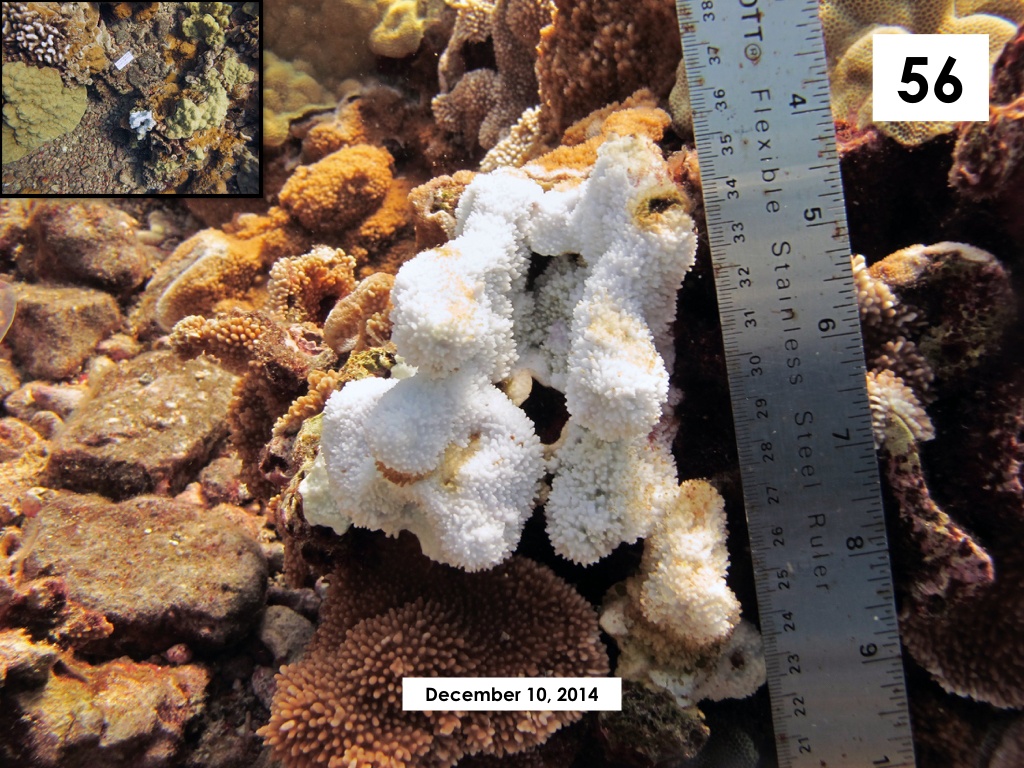
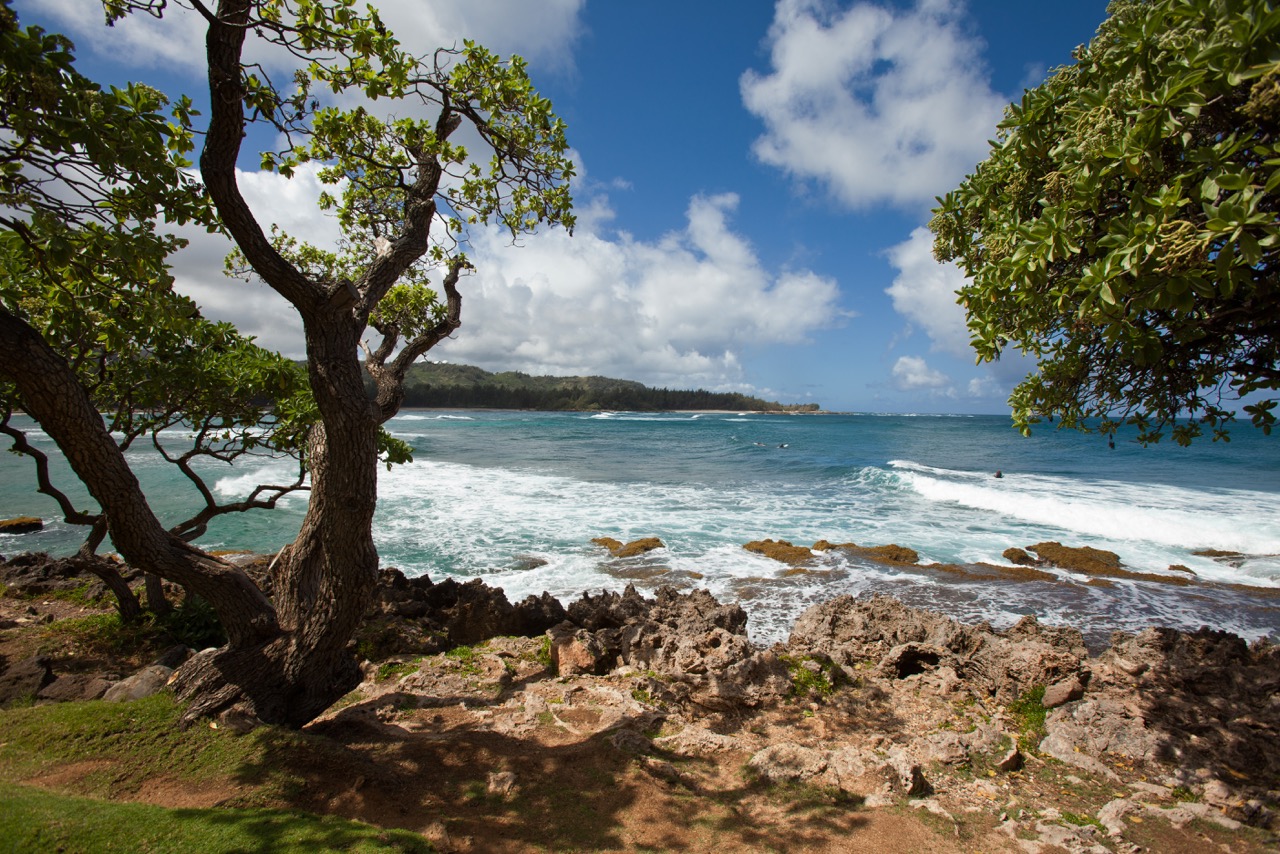
Leave a Reply